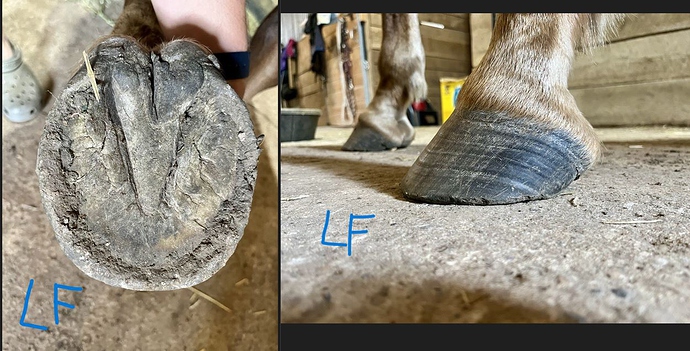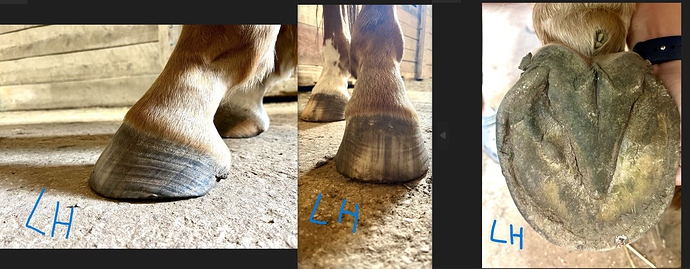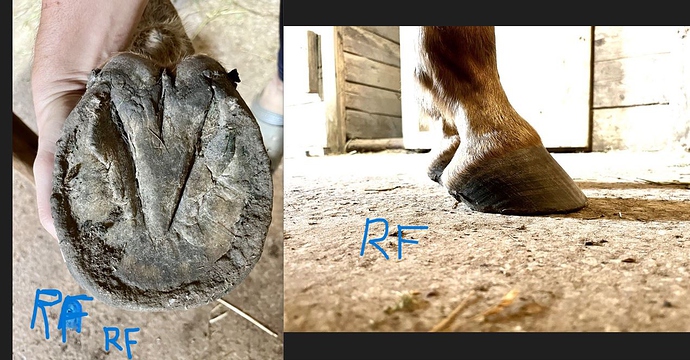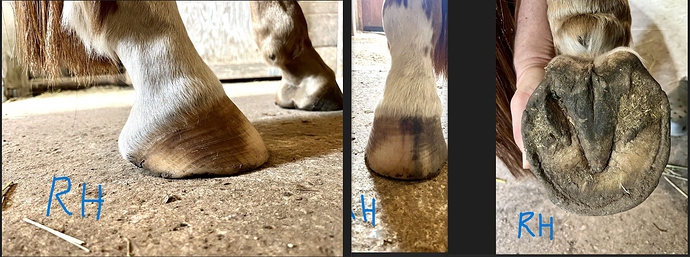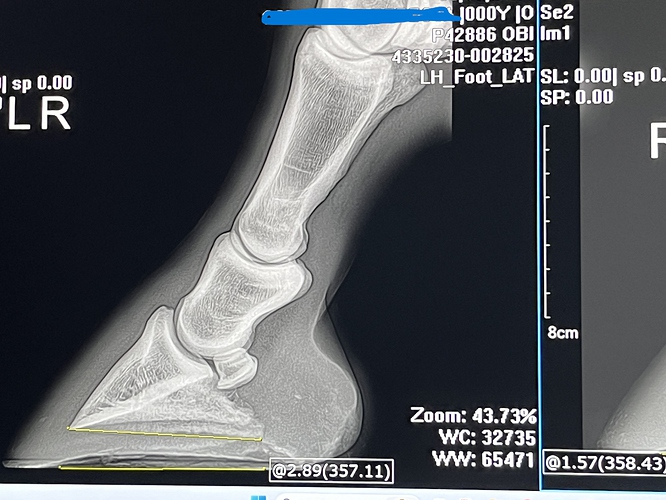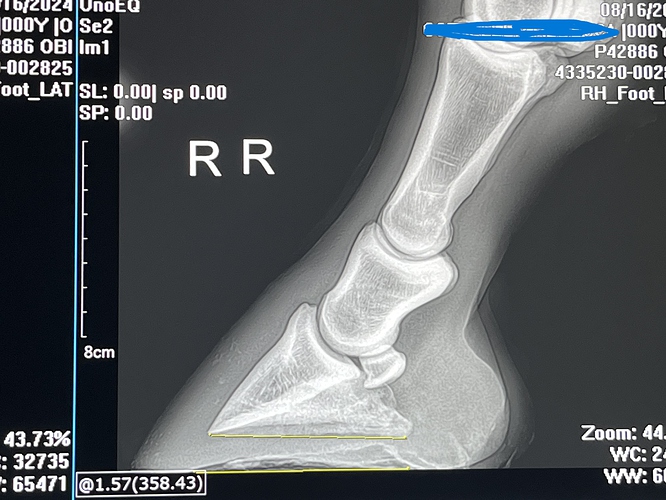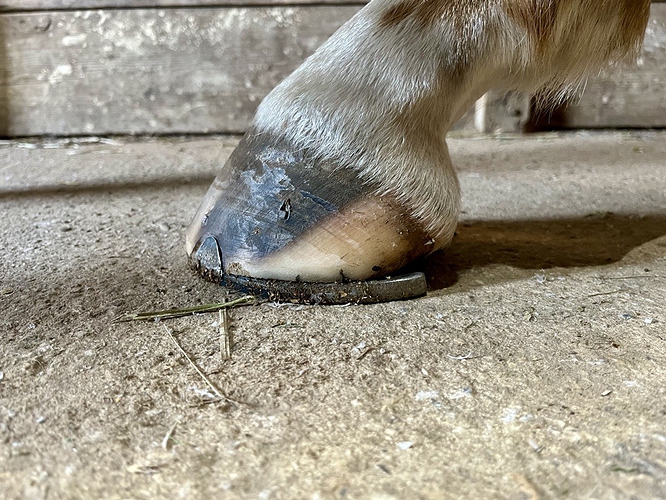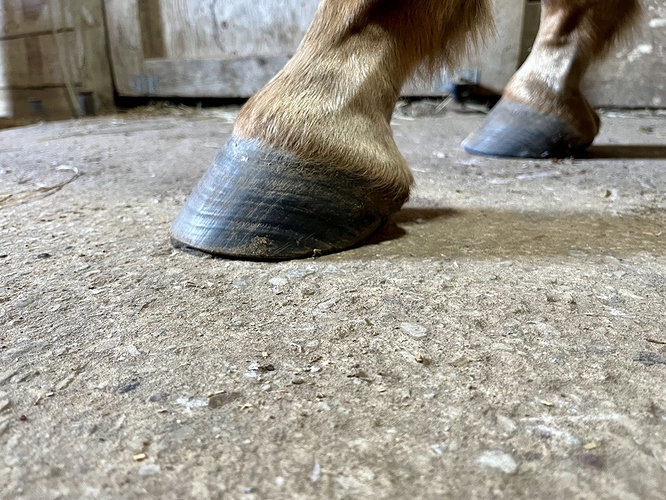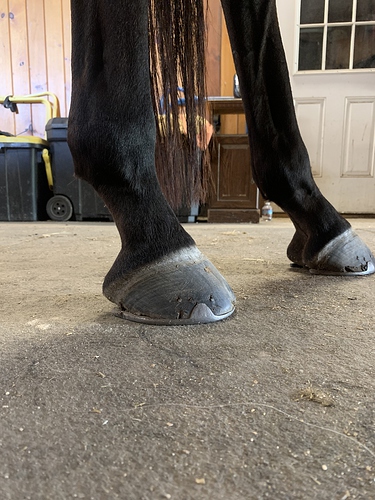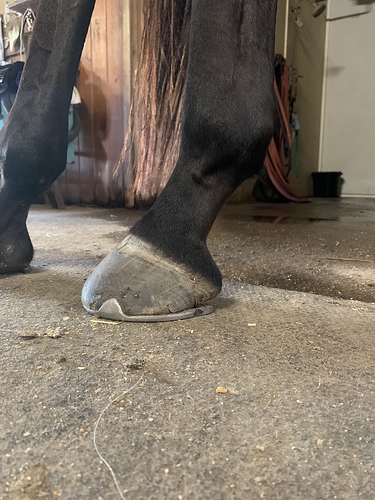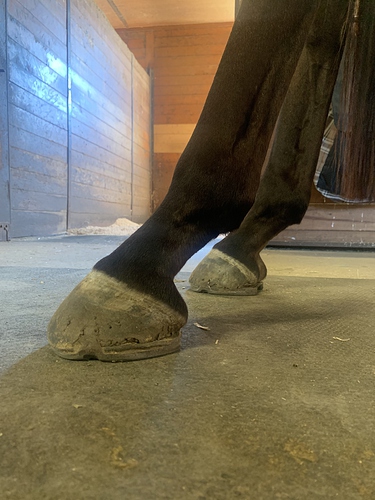Hi, CoTH friends. This started on the NPA thread, but responses helped open my eyes to how little I feel I can trust my farrier right now. He’s coming tomorrow and I’m hoping we can get my boy in a better spot, as he’s currently chronically sore over his haunches and in his lumbar region despite SI, stifle, and muscle injections. I’m looking for comments on what is wrong currently and what needs to be done so I can ask for specific changes.
The photos were taken today at exactly 4 weeks since last trim. I see too much toe, issues with flare on the outside sides of both hinds, and underrun heels. I’m trying to learn about hoof mapping and trimming from resources posted on old threads, but it’s early days.
The rads are from two weeks ago (two weeks post trim). I did attempt to rasp his hind toes back a bit right after his vet appointment, but didn’t do much because I don’t know what I’m doing.
The pictures are labeled RF=Right Front/LH=Left Hind. The rads are RR=Right Rear/LR= Left Rear.
Please educate me. The plan is to shorten and remove sole from the toes and shoe all four (with leather pads in the back). I’ll also ask for comments on the post-farrier pics to see how urgently we need a new farrier or if good changes were made.
Thank you for any help!

